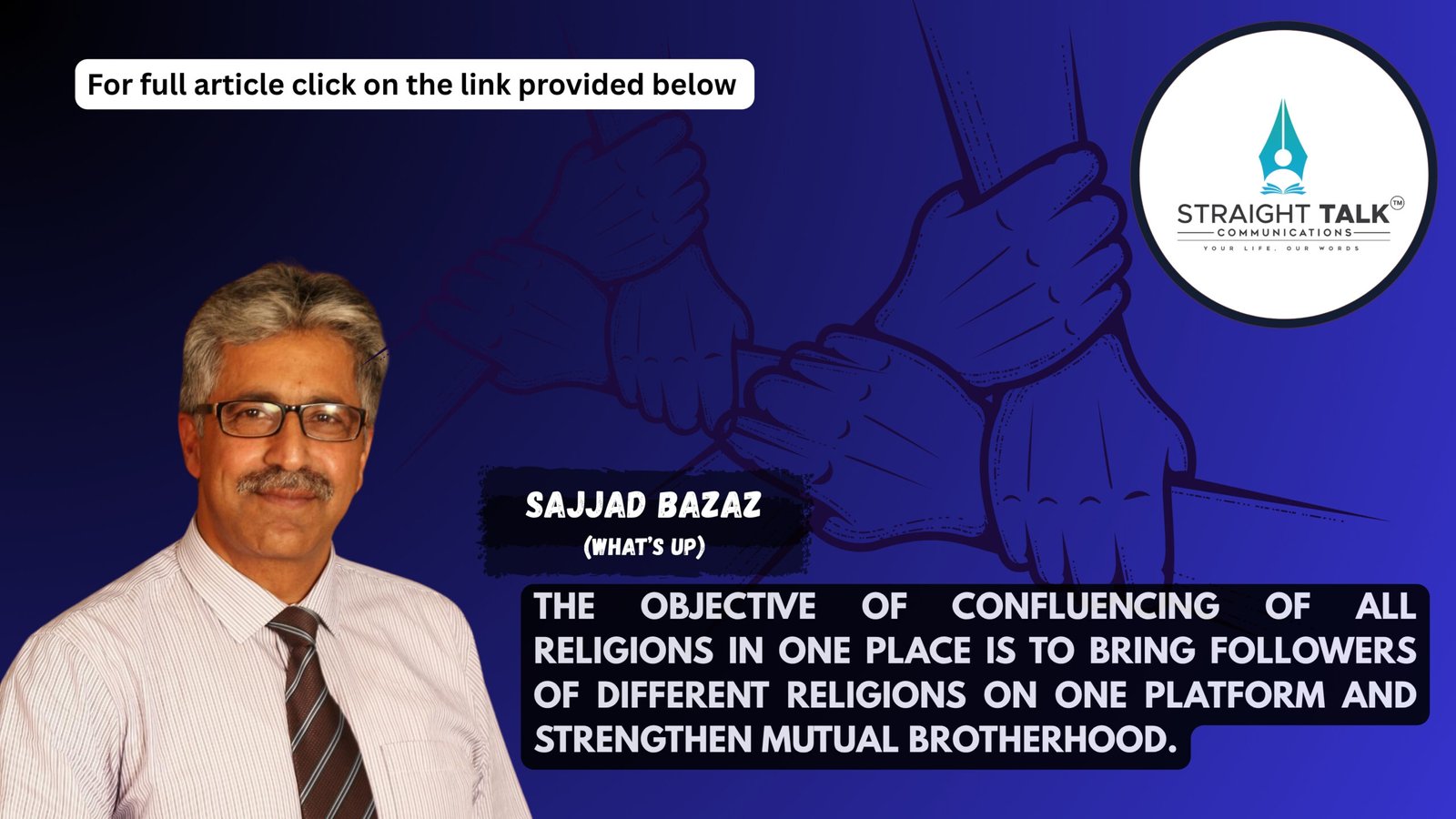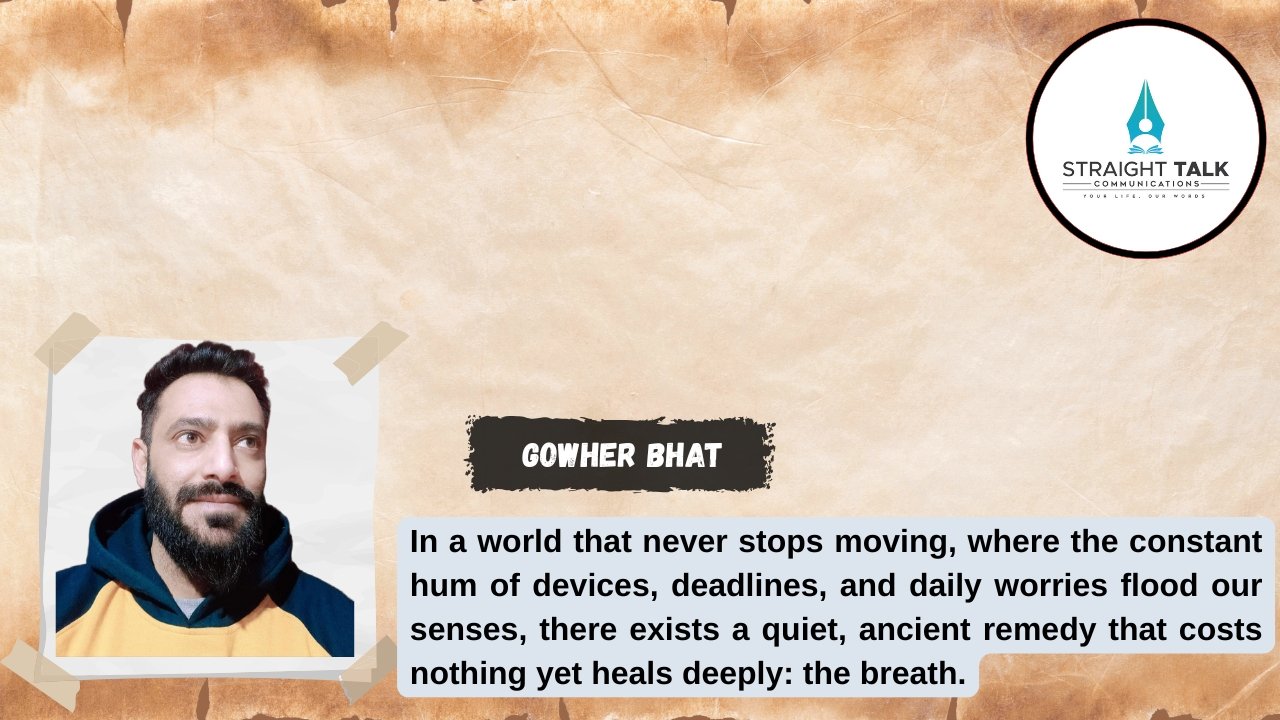Sewing Brotherhood

It is the spinal cord of our cultural heritage.
Sajjad Bazaz
A significant development in the context of sewing brotherhood with a fusion of different religions has been contemplated at the national level, beginning with the construction of a unique temple in Kashmir. A cross section of national media recently flashed detailed reports about this unique initiative symbolizing humanity and conveying “Sab Ka Malik Ek” (God is One).
To be precise, Sai Mandir Sansthan in Surat, Gujarat, has planned its expansion to Jammu and Kashmir as well. The Kashmir branch of this Sansthan will include a Sai Temple, Mosque, Church, and Gurudwara within the same complex; sending a message of brotherhood among different religions.
The objective of confluencing of all religions in one place is to bring followers of different religions on one platform and strengthen mutual brotherhood. As per the concept, this complex will reflect the cultural and religious diversity of Kashmir, where people of all faiths can participate in prayers and social activities together.
Since the practical transformation of this unique concept is under process, it would be premature to deliberate upon the development till the temple complex is established. However, in the context of Jammu & Kashmir (J&K), which was recently hit by a deadly terror attack in Baisaran meadows of Pahalgam leaving 26 dead, the culture of brotherhood has assumed huge significance.
Let’s revisit the rich cultural heritage of our place (J&K). An apt quote in the context of the importance of human heritage is worth reproducing – “A people without the knowledge of their past history, origin, and culture is like a tree without roots.” This is the quote of Marcus Garvey, a famous Jamaican orator for the Black Nationalism and Pan-Africanism movements.
All of us understand that culture and heritage shapes human society. In other words, cultural heritage is the legacy of physical artifacts and intangible attributes of a group or a society that are inherited from past generations, maintained in the present and bestowed for the benefit of future generations. The heritage that survives from the past is often unique and irreplaceable, which places the responsibility of preservation on us.
It’s argued that the human race has always relied on its past to build the present and construct its future. It adds character and uniqueness to the place, region or community. Experts in the field maintain that “generations have lived before us and have shaped the world we reside in.” So, in the backdrop of these arguments, it makes sense for us to protect our cultural heritage to get a sense of identity.
As far as the cultural heritage of our region (J&K) is concerned, we are totally different from the rest of India for having a varied unique cultural blend, besides being different in geographical, demographical, ethical and social entities. Even as the distinct parts of the region – Jammu and Kashmir, yield diverse religion, language and culture, they constantly interfuse with each other resulting in sparkling specimens of unity in diversity. The various cultural forms like art and architecture, fairs and festivals, rites and rituals, languages and landscapes, reflects uniformity and diversity with matchless cultural symmetry.
However, protection and promotion of cultural heritage has always remained a huge challenge, as we have lost sense of our long and cherished history of 5000 years. Our cultural heritage has everything precious where peace, tolerance, devotion to spiritual and academic pursuits remains its hallmark. One of the outstanding features of the region has been a unique distinction of being a place where people from all walks of life across the world have been coming to seek peace, knowledge and spiritual enlightenment. Kashmir, which has traditionally been called the place of saints, has remained a seat of learning for years together. The contribution of the scholars of this region to literature has simply been outstanding.
And brotherhood constitutes one of the important parts of our culture. It is Kashmiri culture alone where the faith and tradition of preaching and worshipping religions and pilgrimage centres have been a very unique and glorious tradition among the people. Here the famous shrines and the people of every faith hold pilgrimage centres in highest esteem and the offerings made and obeisance paid at such places by people of all faiths has created waves across the globe.
Unfortunately, the events that unfolded in the last three decades, forced the brotherhood to take a back seat where all human values have been thrown to the winds. Crime, cruelty and outrage of humankind have been let loose in the tsunami of violence. So, preserving cultural heritage also includes restoring traditional links of brotherhood among the people of the region. It is here where the intellectual class including local scholars and artistes need to rise to the occasion and play an important role in maintaining and preserving this important pillar of our cultural heritage.
In fact, we have to look after all aspects of our cultural heritage, be it tangible or intangible aspects. There should be a holistic approach to the sector based on an appreciation of cultural pluralism and diversity. Active involvement of practitioners, scholars and students across the state in the revival of cultural heritage cannot be overlooked. Dissemination of professional information by means of newsletters and conferences, educational programmes, training workshops and seminars should be a continuous process. More particularly, involvement of the youth force will yield quick and effective results.
Let it be also an annual affair to inaugurate a revived cultural heritage (tangible or intangible) especially on the world heritage day and publicly appreciate such people responsible for such revival. Can’t we have a cultural heritage Centre employing best practices in cultural heritage education, research and consultancy?
One more thing, which can keep the ball rolling, is to introduce the cultural heritage sector in the regular curriculum of our educational institutions. Here we can replicate the system of other countries where a cultural heritage management (CHM) course is being run in such institutions and exclusively deals with the vocation and practice of managing cultural heritage. Such courses are traditionally concerned with the identification, interpretation, maintenance, and preservation of significant cultural sites and physical heritage assets, although intangible aspects of heritage, such as traditional skills, cultures and languages are also considered.
Even as intangible cultural heritage is more difficult to preserve, combined efforts always make it possible. Let us bear it in mind that brotherhood and language are considered cornerstone for other forms of the cultural heritage.
(Sajjad Bazaz is Editor In Chief, Straight Talk Communications. He is former Head of Corporate Communication & CSR Department and Internal Communication & Knowledge Management Department, J&K Bank)







